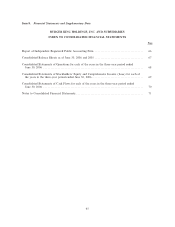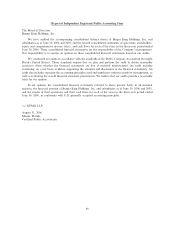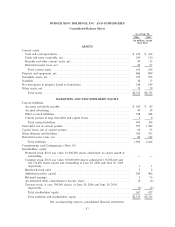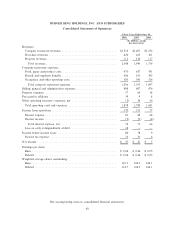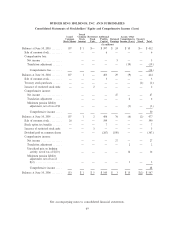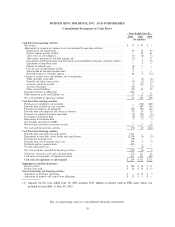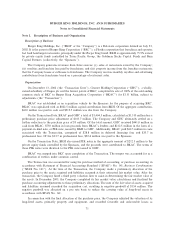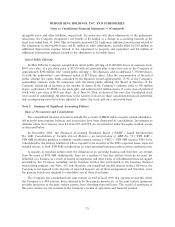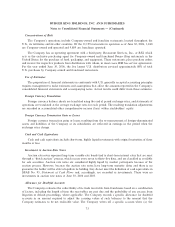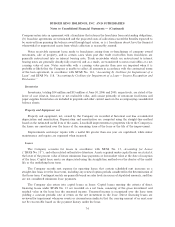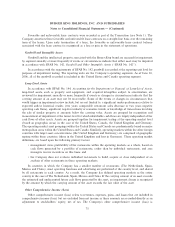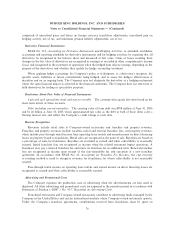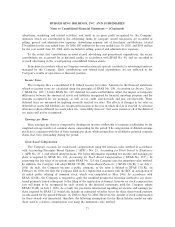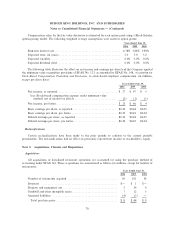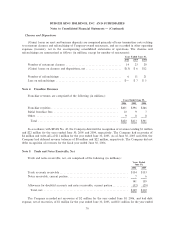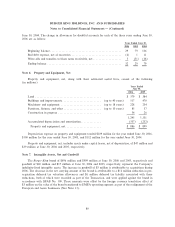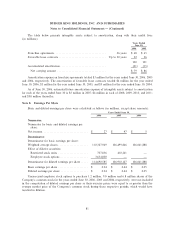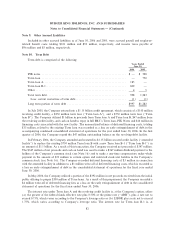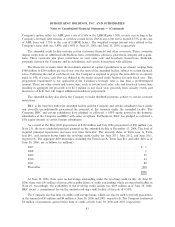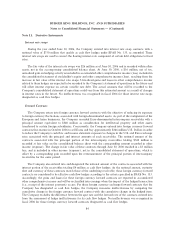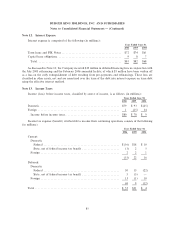Burger King 2006 Annual Report Download - page 87
Download and view the complete annual report
Please find page 87 of the 2006 Burger King annual report below. You can navigate through the pages in the report by either clicking on the pages listed below, or by using the keyword search tool below to find specific information within the annual report.BURGER KING HOLDINGS, INC. AND SUBSIDIARIES
Notes to Consolidated Financial Statements Ì (Continued)
Favorable and unfavorable lease contracts were recorded as part of the Transaction (see Note 1). The
Company amortizes these favorable and unfavorable lease contracts on a straight-line basis over the remaining
term of the leases. Upon early termination of a lease, the favorable or unfavorable lease contract balance
associated with the lease contract is recognized as a loss or gain in the statement of operations.
Goodwill and Intangible Assets
Goodwill and the intellectual property associated with the Burger King brand are assessed for impairment
by segment annually or more frequently if events or circumstances indicate that either asset may be impaired
in accordance with SFAS No. 142, Goodwill and Other Intangible Assets (""SFAS No. 142'').
In accordance with the requirements of SFAS No. 142, goodwill is recorded at the reporting unit level for
purposes of impairment testing. The reporting units are the Company's operating segments. As of June 30,
2006, all of the goodwill recorded is included in the United States and Canada operating segment.
Long-Lived Assets
In accordance with SFAS No. 144, Accounting for the Impairment or Disposal of Long-Lived Assets,
long-lived assets, such as property and equipment, and acquired intangibles subject to amortization, are
reviewed for impairment annually or more frequently if events or changes in circumstances indicate that the
carrying amount of an asset may not be recoverable. Some of the events or changes in circumstances that
would trigger an impairment review include, but are not limited to, a significant under-performance relative to
expected and/or historical results (two years comparable restaurant sales decrease or two years negative
operating cash flows), significant negative industry or economic trends, or knowledge of transactions involving
the sale of similar property at amounts below the carrying value. Assets are grouped for recognition and
measurement of impairment at the lowest level for which identifiable cash flows are largely independent of the
cash flows of other assets. Assets are grouped together for impairment testing at the operating market level
(based on geographic areas) in the case of the United States, Canada, the United Kingdom and Germany.
The operating market asset groupings within the United States and Canada are predominantly based on major
metropolitan areas within the United States and Canada. Similarly, operating markets within the other foreign
countries with larger asset concentrations (the United Kingdom and Germany) are comprised of geographic
regions within those countries (three in the United Kingdom and four in Germany). These operating market
definitions are based upon the following primary factors:
‚ management views profitability of the restaurants within the operating markets as a whole, based on
cash flows generated by a portfolio of restaurants, rather than by individual restaurants, and area
managers receive incentives on this basis; and
‚ the Company does not evaluate individual restaurants to build, acquire or close independent of an
analysis of other restaurants in these operating markets.
In countries in which the Company has a smaller number of restaurants (The Netherlands, Spain,
Mexico and China), most operating functions and advertising are performed at the country level, and shared
by all restaurants in each country. As a result, the Company has defined operating markets as the entire
country in the case of The Netherlands, Spain, Mexico and China. If the carrying amount of an asset exceeds
the estimated and undiscounted future cash flows generated by the asset, an impairment charge is recognized
by the amount by which the carrying amount of the asset exceeds the fair value of the asset.
Other Comprehensive Income (Loss)
Other comprehensive income (loss) refers to revenues, expenses, gains, and losses that are included in
comprehensive income (loss) but are excluded from net income as these amounts are recorded directly as an
adjustment to stockholders' equity, net of tax. The Company's other comprehensive income (loss) is
75


